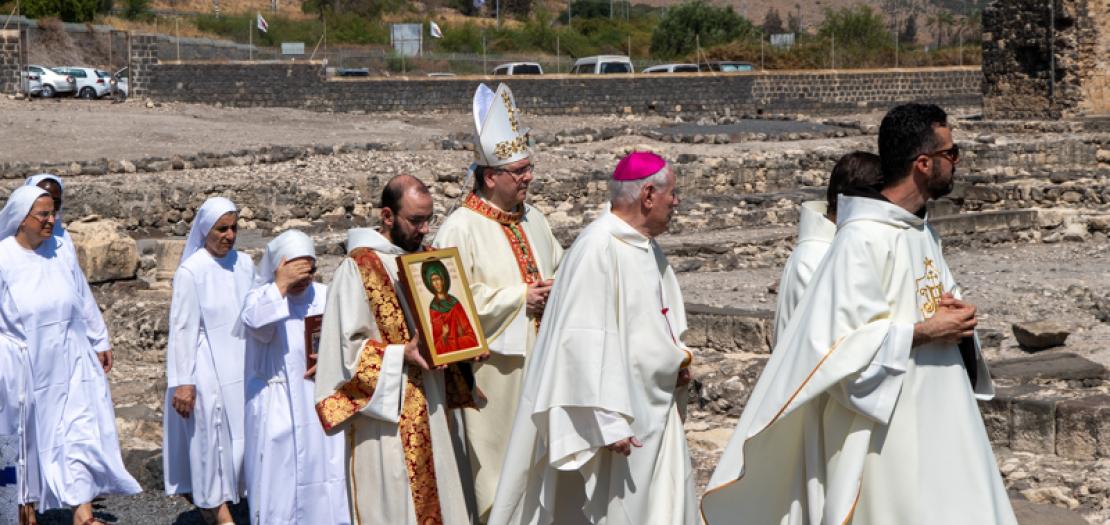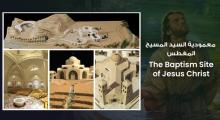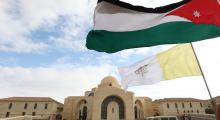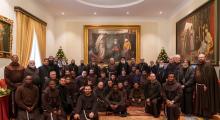Issued by the Catholic Center for Studies and Media - Jordan. Editor-in-chief Fr. Rif'at Bader - موقع أبونا abouna.org

On 22 July, the Franciscan community of the Custody of the Holy Land had the privilege of celebrating the feast-day of Mary Magdalene in the very place of her home town, in the Franciscan shrine of Màgdala, on the western shore of the Sea of Galilee. With the decree of 3 June 2016, Pope Francis wanted to make this liturgical memory more solemn by elevating it to the same degree as the feast-days that celebrate the apostles.
Mary Magdalene, that the great theologian and philosopher Thomas Aquinas defined “apostle of the Apostles,” was one of the women in Jesus’ entourage. “She belongs to the group of women who had followed Jesus from Galilee,” Fr. Francesco Patton, who presided the solemn celebration, emphasized in his homily. “Magdalene follows Jesus to Jerusalem and on to Calvary, and while the disciples let themselves be overcome by fear and run away, Magdalene is there, under the cross, faithful to her Master, faithful to her Lord.”
Above all, though, Mary Magdalene was the first to meet the Risen in front of the empty tomb, becoming the first witness of the victory of Jesus over death. “The meeting with the Risen transforms us into witnesses: it is something so beautiful and so great that, on the one hand we would, like Magdalene, selfishly be able to keep Jesus with us out of fear of losing him, on the other hand, it is Jesus himself who releases us from this human desire of ours to possess and he tells us: “Do not cling to me, but go to my brothers.” Our existence is fully transformed by Easter when we become capable of witnessing our personal experience of the encounter with the Lord, that is, with Jesus risen, and to do so with the simplest words.”
The Franciscan archaeological site of Màgdala
The epithet of Mary Magdalene or Madeleine comes from the town of her birth, Màgdala, a flourishing town of fishermen and trade on the shores of the Sea of Galilee. It was in 1889 that the Custody of the Holy Land decided to purchase a plot of land here that possibly held the ancient remains of what was believed to be the house of the female disciple.
“The excavations that have followed on here since the 1970s,” explains Fr. Tymoteusz Marszałek, Superior of the community and in charge of the archaeological site of the city of Mary Magdalene, “have brought to the light the whole area of the harbor which makes Màgdala the most complete example of an ancient harbor ever identified to date on the shores of the Sea of Galilee, with important archaeological remains (the four-sided portico of a gymnasium, the moorings for the boats) which prove the wealth of this town. A large Byzantine monastery, which can be dated to the 5th century, with extraordinary mosaics, where the community that looked after the sanctuary dedicated to Mary Magdalene probably lived, also emerged.”
“With today’s celebration, at last this place is today a holy place again, a place of prayer, and not only an archaeological site,” the Custos of the Holy Land continued. “I hope that all the pilgrims who come here have the experience of Mary Magdalene when she met Jesus who “freed her from seven demons. In other words, we can put everything that weighs heavily on our lives into the hands of the Lord and, feeling that we are loved and forgiven by Jesus, then also feel called to follow him.”
The celebration came to an end with a picturesque procession of the community and the faithful along a route that crossed the whole area of the archaeological excavations of the ancient city.







